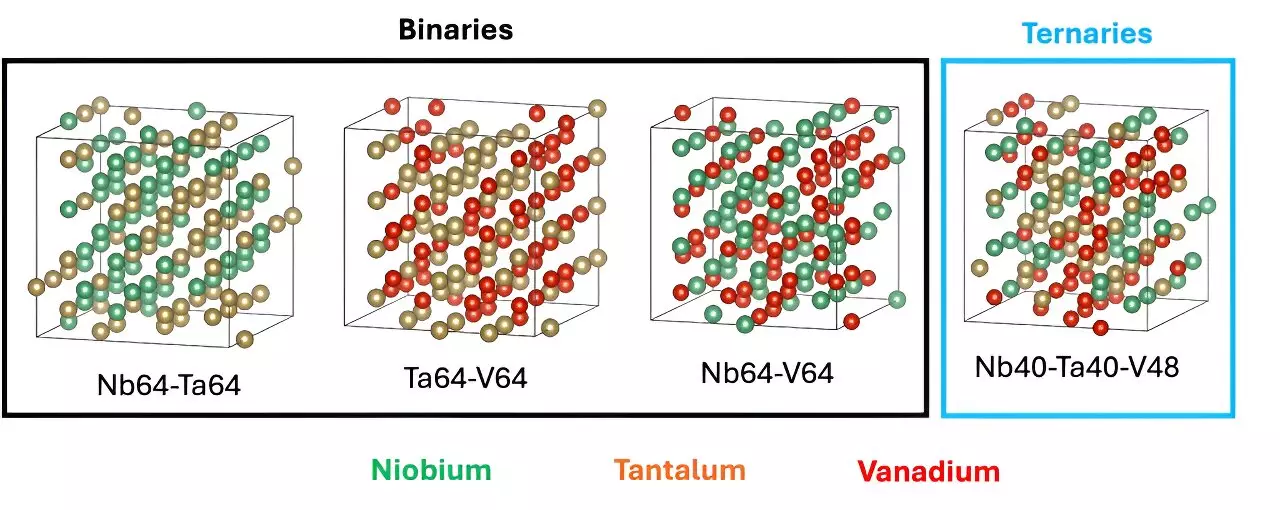The quest for sustainable and practically limitless energy sources has led scientists and researchers to closely investigate nuclear fusion. At the forefront of this research is an innovative project spearheaded by the Oak Ridge National Laboratory (ORNL) under the Department of Energy. Researchers have developed an artificial intelligence (AI) model aimed at identifying advanced alloys that serve as shielding materials for components in nuclear fusion reactors. This development marks a significant progression in enhancing fusion plant effectiveness and safety.
The core of this research revolves around the need for specialized alloys that can withstand the extreme conditions present in nuclear fusion reactors. According to ORNL data scientist Massimiliano Lupo Pasini, these alloys need to excel not only in high-temperature resilience but also in maintaining robust mechanical properties essential for structural integrity. Historically, the materials employed in these scenarios have relied on tungsten, augmented by various additional elements. While tungsten-based alloys showcased remarkable heat-resistant capabilities, they presented challenges regarding consistent shielding performance, leading to a pressing need for new materials.
The crux of the problem lies in identifying suitable metallic combinations that can achieve a balance of desirable properties. The complexities involved in material science, particularly in alloy formulation, amplify the difficulty of this task. Enter AI: by harnessing machine learning algorithms, researchers can bypass traditional lengthy and resource-intensive exploratory processes. This AI-driven approach dramatically accelerates the identification of viable alloy candidates, effectively revolutionizing the development of materials intended for fusion applications. As Lupo Pasini points out, the transition from trial-and-error methodologies to AI-generated insights represents a paradigm shift in material science.
The project team comprised several experts, including German Samolyuk, Jong Youl Choi, Markus Eisenbach, Junqi Yin, and Ying Yang, who collectively forged the data results that fuel the AI model’s capabilities. Their diverse expertise across different scientific disciplines not only enriched the research process but also facilitated the creation of a comprehensive database from which new alloy candidates could be identified. The collaboration indicates a holistic approach to solving the challenges in this domain, showcasing that teamwork is integral to scientific advancement.
Despite the promising advancements made by this initial AI model, Lupo Pasini emphasizes that this is only the tip of the iceberg. The generated data will serve to enhance future research endeavors focusing on training and implementing more complex machine learning models pertaining to material discovery. Expanding upon the current findings requires multifaceted approaches to address the intricate makeup of alloys, intending to cover six elemental components thoroughly. The inherent challenge is amplified by the computational intensity of quantum mechanical calculations, which necessitate robust supercomputing resources.
Both the Perlmutter and Summit supercomputers played crucial roles in data generation, consuming a significant amount of processing time – totaling over a year to reach completion. These sophisticated computing systems represent cutting-edge technology in the realm of computational science and are indispensable in the pursuit of advancing materials engineering.
Ultimately, the research holds promise not only for enhancing the materials utilized in nuclear fusion but also for yielding transformative breakthroughs in the energy sector. As Pasini eloquently states, the goal is to aid material scientists in refining their methods of determining optimal alloy compositions through AI guidance. With these advancements, the potential for disruptive technological progress in nuclear fusion applications seems increasingly attainable.
Continued improvements in the integration of AI will undoubtedly provide valuable assistance in this frontier, opening the door to innovative materials that could redefine energy generation for generations to come. As the frontier of nuclear fusion technology expands, so too does the need for robust, effective materials, making the collaboration between artificial intelligence and material science a pivotal element in this ongoing journey.


Leave a Reply